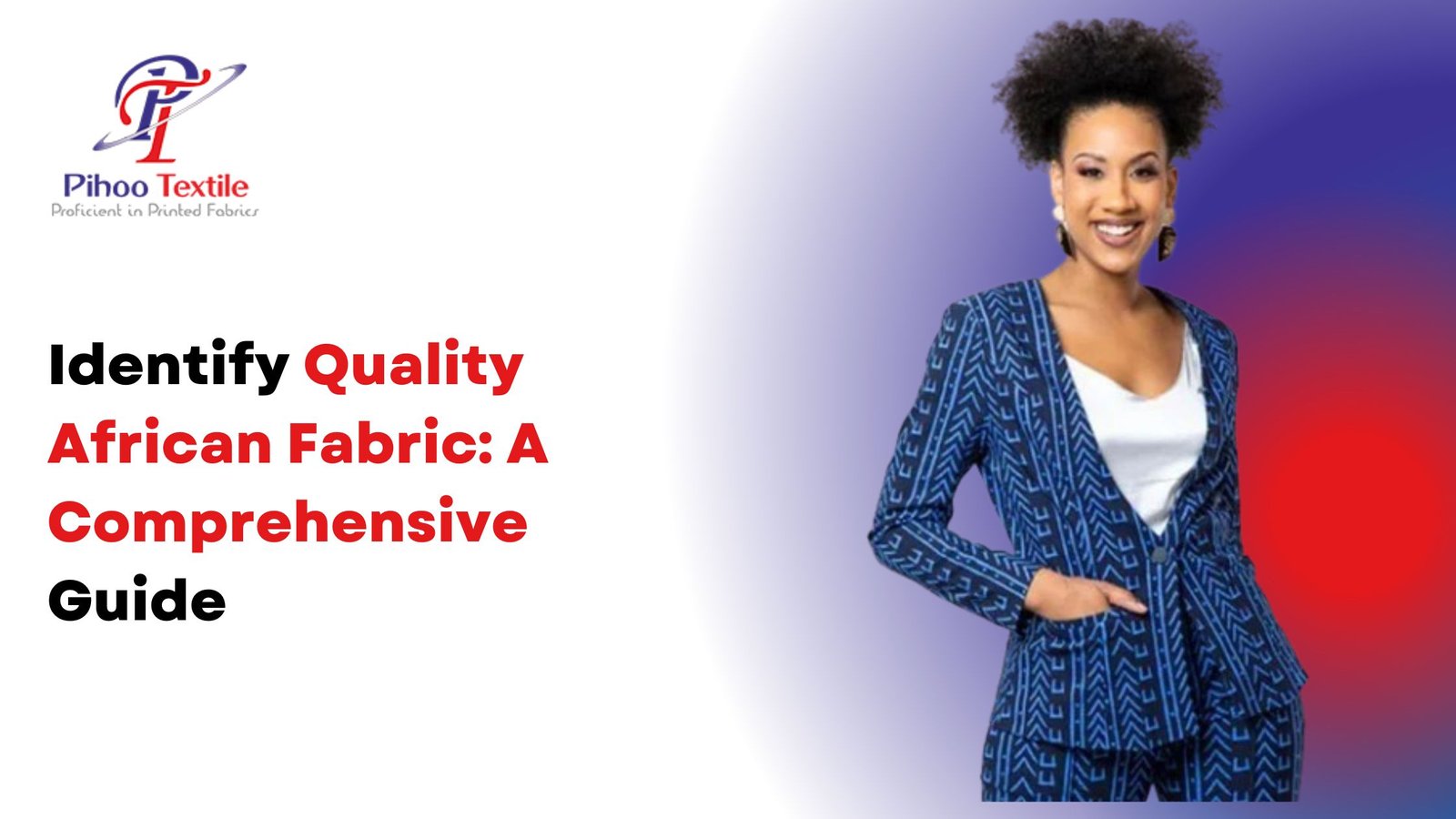Identify Quality African Fabric: A Comprehensive Guide
When it comes to fashion, décor, or crafts, African printed fabrics stand out for their dazzling colors, intricate designs, and profound cultural stories. But not all fabrics marketed as “African prints” are created equal. With a rise in imitations flooding global markets, discerning genuine, high-quality African fabric is more crucial than ever for buyers, designers, and entrepreneurs alike. At Pihoo Textiles, we champion both authenticity and quality—here’s your expert guide to navigating the world of African fabrics and making empowered choices.
Understanding the Essence of Authentic African Fabric
African textiles are more than just material—they’re heritage in motion. Genuine fabrics like Ankara, Kente, Khanga, Kaftan, and Dashiki often bear the weight of history, tradition, and excellent workmanship. Authentic pieces are typically hand-crafted, steeped in cultural symbolism, and finished to endure generations.
Origins Matter: Where Your Fabric Is Made
The heart of quality lies in its origin. Most authentic African prints originate from textile hubs like Ghana, Nigeria, Mali, and Senegal. Fabrics made in these regions—using time-honored weaving, dyeing, and waxing techniques—are richer in texture and far superior in durability when compared to mass-produced imitations from outside the continent.
Fact: Fabric origin not only ensures authenticity but often aligns with fair-trade practices, supporting artisans and local economies.
The Feel Test: Weight, Texture, and Comfort
A tactile inspection can reveal a lot about quality. High-grade Ankara, Kente, or Mudcloth fabrics feel heavier and more robust. Cotton-based pieces should offer a soft hand-feel while retaining a slightly distinct, grainy texture. Any rough, excessively stiff, or plasticky sensation raises red flags about blends or inferior manufacturing.
- Weight: Heavier fabric typically means denser, longer-lasting fibers and a luxury drape.
- Texture: Hand-woven or hand-printed African fabrics have subtle irregularities, showcasing artisanal craftsmanship.
- Comfort: True African cotton should breathe well and feel pleasant against the skin—a must for summer styles.
Color Brilliance & Pattern Definition
One of the unmistakable trademarks of genuine African prints is their vibrant color. Artisans use natural and advanced synthetic dyes, meticulously setting hues to withstand repeated washing and sun exposure.
- Colorfastness: Quality fabrics maintain their bold, saturated colors even after multiple washes.
- Pattern Intricacy: Authentic fabrics feature well-outlined, complex patterns without smudges or blurred edges.
Insider insight: Modern digital printing has brought sharper patterns but always ask about colorfastness. The best producers, including Pihoo Textiles, test for wash and light resistance before shipping.
Design: The Power of Symbolism
Every authentic African print tells a story. Classic Kente weaves express proverbs; Dashiki motifs echo tribal tales; Mudcloths from Mali use geometric shapes as secret codes. Genuine fabric isn’t just pretty—it’s profound.
- Check for depth of meaning: Knowledgeable sellers can explain the story or significance behind each pattern.
- Signature techniques: Look for details like thick gold threads in Kente, deliberate tie-dye irregularities in Adire, or symmetrical layering in Khanga.
Seller Reputation and Certification
A reputable supplier is non-negotiable. Established manufacturers or vendors with a history of ethical sourcing and positive reviews often offer guarantees on their African fabrics. Look for suppliers that:
- Provide certificates of authenticity or origin.
- Facilitate transparency in their manufacturing and sourcing.
- Offer references or showcase verified customer feedback.
Price: A Reflection of Quality
While price alone doesn’t determine value, genuine, hand-made African prints often command higher costs. The investment goes into skilled labor, high-grade raw materials, and complex processes, not just the finished fabric.
- Warning: Exceptionally low prices likely signal mass-produced imitations, synthetic blends, or poorly finished batches.
- Balance: Competition in the market means quality fabrics are now more accessible, but they should still justify their cost with feel, look, and performance.
Technical Testing: GSM, Shrinkage, and Colorfastness
Successful fabric entrepreneurs and designers always review technical specifications:
- GSM (Grams per Square Meter): Measures weight. Dress fabrics usually fall in the 80–150 GSM range, while heavier items (like home décor) require 180–220 GSM.
- Shrinkage Tests: Quality fabrics are pre-washed or tested for minimal shrinkage, maintaining sizing and shape after laundering.
- Colorfastness: Top suppliers, such as Pihoo Textiles, conform to ISO 105 standards—ensuring dyes and prints resist bleeding during washing, perspiration, or sunlight.
For more detailed insights into industry benchmarks, explore our guide: “Latest ISO 105 Colorfastness Standards for Printed Fabrics.”
Origin Verification and Ethical Credentials
As consumers grow increasingly ethical-minded, transparency in sourcing and production is key:
- Check for clear documentation of fabric origin.
- Ask about the working conditions at weaving or printing facilities.
- Support brands involved in fair trade, women’s empowerment, and ecological programs.
Inspect for Finishing Details
A close inspection of the fabric’s finishing can reveal quality:
- Selvages (fabric edges): Should be straight and well-stitched, not fraying or uneven.
- Printing alignment: On real African prints, designs match up across seams when sewn properly.
- Labeling: Top suppliers tag their fabrics with detailed care instructions and origin data.
Pihoo Textiles: Your Trusted Guide to Authentic African Fabric
At Pihoo Textiles, we pride ourselves on a meticulous approach to quality:
- Every batch is rigorously checked for weight, color vibrancy, and detail.
- Our fabrics are sourced directly from trusted African artisans and established weaving hubs.
- We offer technical sheets and swatches for B2B buyers and support varied customization needs.
Whether sourcing for boutique collections, mass retail, or bespoke projects, our dedication to authenticity and excellence means our clients receive only the best.
Extra Tips for the Savvy Buyer
- Always ask to feel a sample or purchase a small swatch before placing a large order.
- Wash new fabric separately the first time to test for color run (a sign of poor dye-setting).
- Seek clarity on return and exchange policies with every new vendor.
Conclusion
Identifying quality African fabric requires a keen eye for detail, a basic understanding of textile science, and a preference for ethical, reputable sources. From the weight and feel to intricate colorwork and authentic backstory, every factor plays a role in distinguishing genuine excellence from mass-market lookalikes.
With Pihoo Textiles as your partner, you can source African prints that blend outstanding artistry, technical superiority, and a pride of origin—delivering unmatched style and substance for any project or collection.
Ready to make confident, informed choices? Explore our full range, consult our experts, and bring the heritage and brilliance of African fabric to your next creation.


